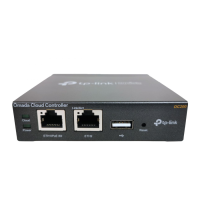31
Select the frequency band (2.4GHz/5GHz) and configure the following parameters.
Wireless Mode Select the IEEE 802.11 mode the radio uses.
• For 2.4GHz:
802.11b/g/n/ax mixed: All of 802.11b, 802.11g, 802.11n, and 802.11ax
clients operating in the 2.4GHz frequency can connect to the EAP. Note
that 802.11ax is only available for certain devices.
802.11b/g/n mixed: All of 802.11b, 802.11g, and 802.11n clients operating
in the 2.4GHz frequency can connect to the EAP.
802.11b/g mixed: Both 802.11b and 802.11g clients can connect to the
EAP.
802.11n only: Only 802.11n clients can connect to the EAP.
• For 5GHz:
802.11a/n/ac/ax mixed: All of 802.11a, 802.11n, 802.11ac, and 802.11ax
clients operating in the 5GHz frequency can connect to the EAP. Note that
802.11ax is only available for certain devices.
802.11a/n/ac mixed: All of 802.11a, 802.11n, and 802.11ac clients
operating in the 5GHz frequency can connect to the EAP.
802.11n/ac mixed: Both 802.11n clients and 802.11ac clients operating in
the 5GHz frequency can connect to the EAP.
802.11ac only: Only 802.11ac clients can connect to the EAP.
Channel Width Select the channel width of the EAP. The available options differ among
different EAPs.
For some EAPs, available options include 20MHz, 40MHz and 20/40MHz.
For other EAPs, available options include 20MHz, 40MHz, 80MHz and
20/40/80MHz.
When the radio mode includes 802.11n, we recommend you set the channel
bandwidth to 20/40 MHz or 20/40/80MHz to improve the transmission
speed. However, you may choose a lower bandwidth due to the following
reasons:
• To increase the available number of channels within the limited total
bandwidth.
• To avoid interference from overlapping channels occupied by other
devices in the environment.
• Lower bandwidth can concentrate higher transmit power, increasing
stability of wireless links over long distances.
Channel Limit Check the box to enable the Channel Limit function. With this function
enabled, the wireless frequency 5150MHz~5350MHz will be disabled. This
function can influence the available options in Channel.
This feature is only available on certain devices. To check whether your
device supports this feature, refer to the actual web interface.

